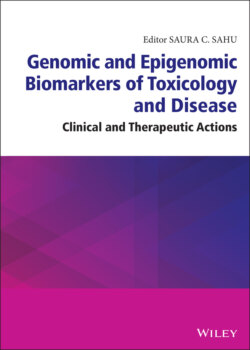Читать книгу Genomic and Epigenomic Biomarkers of Toxicology and Disease - Группа авторов - Страница 42
Carbon Tetrachloride (CCl4) Administration and Histology
ОглавлениеC57BL/6J male mice were orally dosed with carbon tetrachloride (CCl4), because there are numerous reports that CCl4 induces hepatotoxicity in many experimental animals (Chopra et al. 1972). Whole blood and liver samples were collected twenty-four hours after the administration of CCl4 (0 mg/kg (vehicle control: corn oil), 7 mg/kg and 70 mg/kg) for the following experiments.
Hematoxylin and eosin (H&E) staining showed CCl4 (70 mg/kg)-induced histopathological changes in the liver, with significant degeneration and necrosis of hepatocytes in the centrilobular region and perivenular inflammatory infiltrates twenty-four hours after administration, while histological tissue sections of mice in the vehicle control group and CCl4 (7 mg/kg) showed a normal histological morphology of liver tissue samples (Figure 3.9).
Figure 3.9 Representative H&E micrographs of liver tissues collected from mice treated with oral administration of corn oil (control) (a), 7 mg/kg CCl4 (b), and 70 mg/kg CCl4 (c). The control section shows the normal histological structure of the central vein (cv) and surrounding hepatocytes (a). Twenty-four hours after 7 mg/kg CCl4 treatment, there were no histopathological changes by comparison with the control section (b). Twenty-four hours after 70 mg/kg CCl4 treatment, the hepatocytes around the central veins (cv) were vacuolized and necrotic (c).
